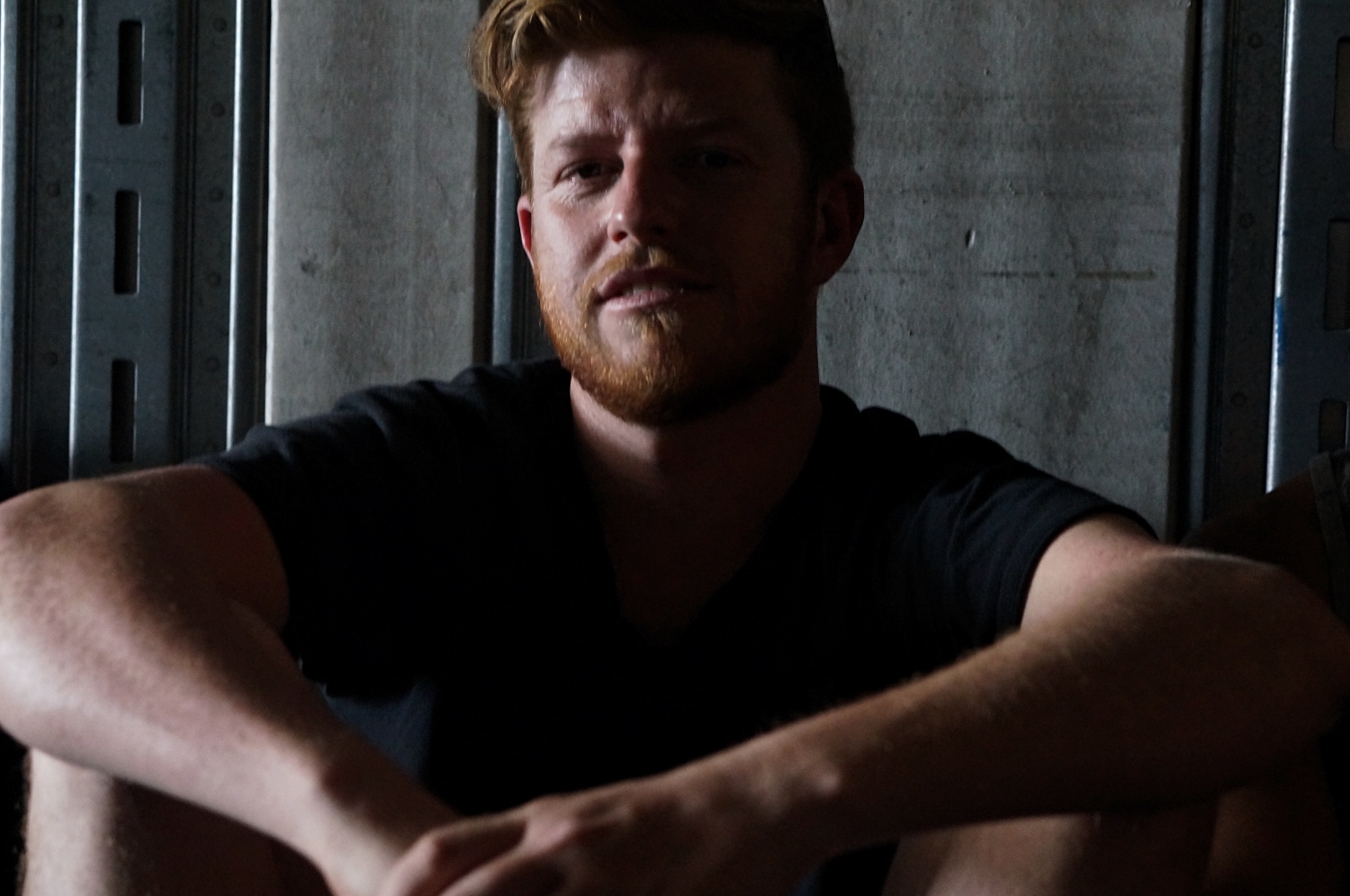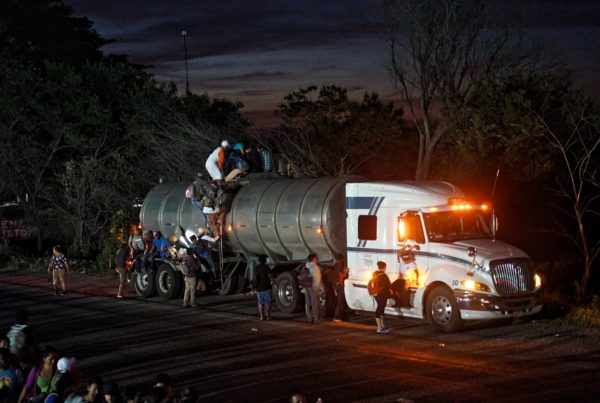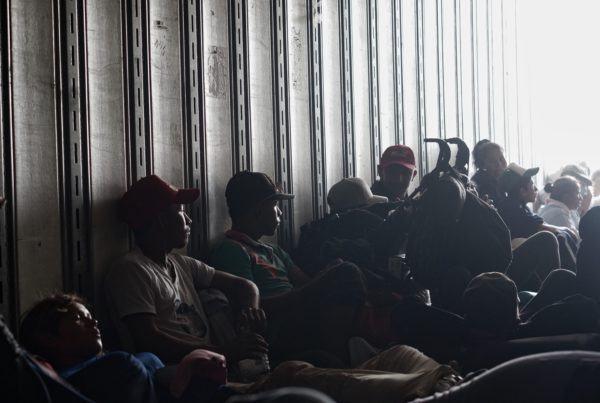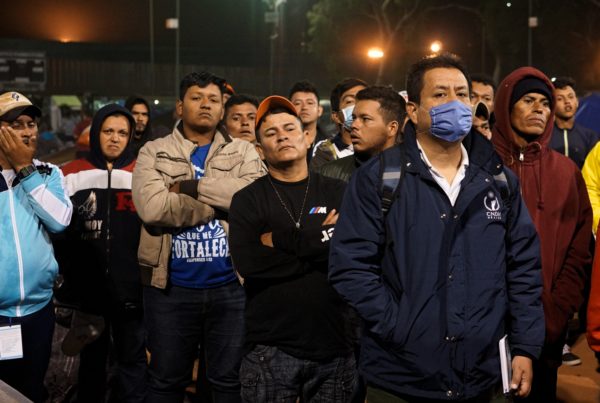After following the news of the caravan’s passage through Mexico for a week, I flew to Tuxtla Gutierrez, capital of Chiapas; Mexico’s southernmost – and poorest – state, and hired a car. I wanted to see this phenomenon of human desperation for myself.
I stop first at a peaceful town called Arriaga. The locals tell me I just missed the caravan. They assure me there are no problems. A serviceman at a gas station tells me the people are “fascinating”. Perhaps these opinions are in hindsight, formed by townspeople who can see the back of the migrants. If the migrants are to remain, will the locals feel the same way? Then again, perhaps the townsfolk of Arriaga are used to strangers.
The freight trains known as “La Bestia,” or the beast, stop in Arriaga. As many as half a million Central American immigrants board these freight trains annually on their journey to the United States. La Bestia is the cheapest, but most dangerous option north to the border. Simultaneously a symbol of liberty and death. There are no passenger railcars to ride. Instead the migrants usually ride atop the moving trains, risking a violent demise for the chance to reach the US.
The trail leads me out of Chiapas and into the state of Oaxaca. I pass lush green orchards and the sierras of the Sepultura Biosphere Reserve. On the other side of those mountains was San Cristobal de Las Casas. This is tourist country for gringos. I eventually reach the small town of Santiago Niltepec.
Despite all my experience working with refugees, I approach the caravan with some caution. I don’t know what to expect, whether the people will be welcoming, or whether they are tired of speaking to foreign journalists.
When I arrive, there is hardly a reporter to be seen.
The migrants have taken over the puebla of Santiago Niltepec. An invasion of tired bodies, stretched out wherever they can find space: pavements, doorways, an abandoned house, a park, a church, a basketball court, the town plaza, a rotunda. All are occupied by sleeping migrants from Central America.
”La Bestia is the cheapest, but most dangerous option north to the border. Simultaneously a symbol of liberty and death.
Some villagers open their houses to the people, offering toilet facilities and a floor to sleep on. Some people cook food for the hungry migrants. Others close the doors to their homes and their businesses.
“Of course, we are scared,” Virginia tells me.
She is a fifty-something woman who sits on her balcony staring with unconcealed distrust at the crowds of people who have occupied her town.
“We are a small puebla, we cannot help these people,” she says. “We just want them to leave.”
The Exodus, as the caravan members call it, passes through the pueblas of southern Mexico with a need for resources that far outstrips the villages’ ability to provide. I can only see a few aid agencies present. Volunteers from the Ministerios Nazarenos de Compasion, the Church of the Nazarene, offer basic medical treatment for blisters and dehydration. Under another marquee, this one erected by the Ombudsman for the Human Rights of the People of Oaxaca, migrants can call home for free.
The few portaloos which have been hired are overwhelmed by demand. Men mostly urinate in the streets. There are police present but they seem to be keeping the peace rather than dictating the caravan’s movements.
A shop owner, who speaks to me through the bars of her window, tells me the local government advised the businesses in the area to close for their own safety. That’s why when night falls all the shops and houses close as one, as if it is rehearsed. Because all the restaurants have closed the shop owner offers to cook dinner for me.
“I am with five other people,” I tell her.
She hesitates, looking suspiciously at the group of dusty Hondurans sitting on the kerb, and then nods curtly.



